Dacia Spring vs VW T-Cross - Differences and prices compared
Costs and Efficiency:
Price and efficiency are key factors when choosing a car – and this is often where the real differences emerge.
Dacia Spring has a decisively advantage in terms of price – it starts at 14500 £, while the VW T-Cross costs 21100 £. That’s a price difference of around 6592 £.
Engine and Performance:
Power, torque and acceleration are the classic benchmarks for car enthusiasts – and here, some clear differences start to show.
When it comes to engine power, the VW T-Cross has a clearly edge – offering 150 HP compared to 65 HP. That’s roughly 85 HP more horsepower.
In acceleration from 0 to 100 km/h, the VW T-Cross is convincingly quicker – completing the sprint in 8.40 s, while the Dacia Spring takes 13.70 s. That’s about 5.30 s faster.
In terms of top speed, the VW T-Cross performs clearly perceptible better – reaching 200 km/h, while the Dacia Spring tops out at 125 km/h. The difference is around 75 km/h.
There’s also a difference in torque: VW T-Cross pulls decisively stronger with 250 Nm compared to 125 Nm. That’s about 125 Nm difference.
Space and Everyday Use:
Beyond pure performance, interior space and usability matter most in daily life. This is where you see which car is more practical and versatile.
Seats: VW T-Cross offers a bit more seating capacity – 5 vs 4.
In curb weight, Dacia Spring is evident lighter – 1013 kg compared to 1267 kg. The difference is around 254 kg.
In terms of boot space, the VW T-Cross offers clearly perceptible more room – 455 L compared to 308 L. That’s a difference of about 147 L.
In maximum load capacity, the VW T-Cross performs clearly perceptible better – up to 1281 L, which is about 277 L more than the Dacia Spring.
When it comes to payload, VW T-Cross distinct takes the win – 480 kg compared to 302 kg. That’s a difference of about 178 kg.
Who wins the race?
The VW T-Cross proves to be dominates this comparison and therefore becomes our DriveDuel Champion!
VW T-Cross is the better all-rounder in this comparison.
 @ Volkswagen AG / VW Media
@ Volkswagen AG / VW Media
VW T-Cross
Costs and Consumption
View detailed analysis
Engine and Performance
View detailed analysis
Dimensions and Body
View detailed analysis
Dacia Spring
The Dacia Spring is an unpretentious city electric that strips EV ownership down to the essentials, offering clean, fuss-free transport for daily urban life. It won't impress luxury-seekers, but its cheerful practicality and rock-bottom running costs make it a clever, no-nonsense choice for anyone who wants electric mobility without the drama.
details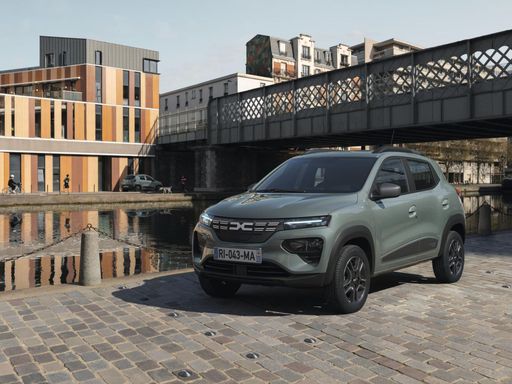 @ Dacia / Renault Group Media
@ Dacia / Renault Group Media
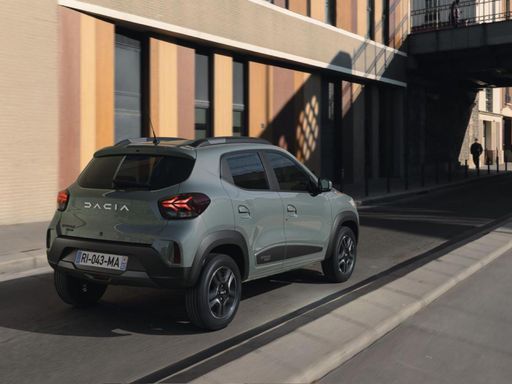 @ Dacia / Renault Group Media
@ Dacia / Renault Group Media
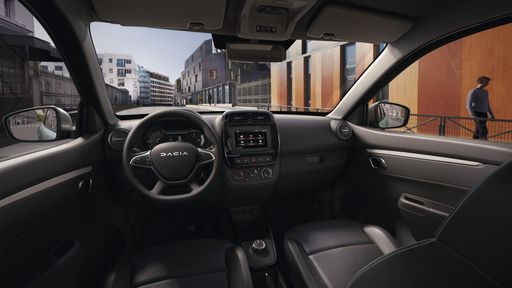 @ Dacia / Renault Group Media
@ Dacia / Renault Group Media
VW T-Cross
The VW T-Cross turns everyday practicality into a style statement, offering a roomy-feeling cabin, clever storage and playful design that suits town life and family duties alike. On the road it's composed and relaxed, rewarding buyers who want the raised seating and confident presence of an SUV without the weighty compromises.
details @ Volkswagen AG / VW Media
@ Volkswagen AG / VW Media
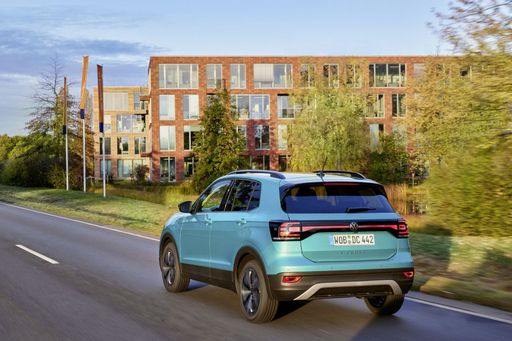 @ Volkswagen AG / VW Media
@ Volkswagen AG / VW Media
 @ Volkswagen AG / VW Media
@ Volkswagen AG / VW Media
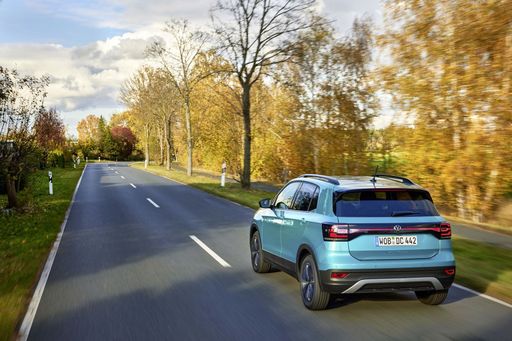 @ Volkswagen AG / VW Media
@ Volkswagen AG / VW Media
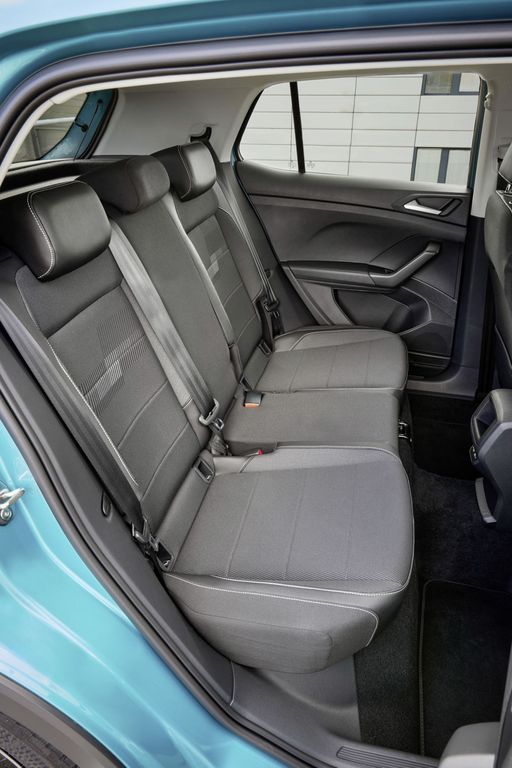 @ Volkswagen AG / VW Media
@ Volkswagen AG / VW Media
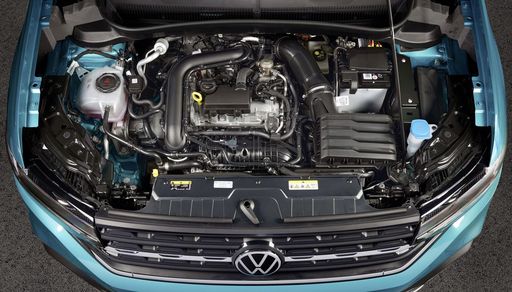 @ Volkswagen AG / VW Media
@ Volkswagen AG / VW Media
 @ Dacia / Renault Group Media
@ Dacia / Renault Group Media
|
 @ Volkswagen AG / VW Media
@ Volkswagen AG / VW Media
|
|
|
|
Costs and Consumption |
|
|---|---|
|
Price
14500 - 17100 £
|
Price
21100 - 31500 £
|
|
Consumption L/100km
-
|
Consumption L/100km
5.4 - 6 L
|
|
Consumption kWh/100km
13.2 - 14.1 kWh
|
Consumption kWh/100km
-
|
|
Electric Range
225 - 228 km
|
Electric Range
-
|
|
Battery Capacity
26.80 kWh
|
Battery Capacity
-
|
|
co2
0 g/km
|
co2
124 - 136 g/km
|
|
Fuel tank capacity
-
|
Fuel tank capacity
40 L
|
Dimensions and Body |
|
|---|---|
|
Body Type
SUV
|
Body Type
SUV
|
|
Seats
4
|
Seats
5
|
|
Doors
5
|
Doors
5
|
|
Curb weight
1013 - 1050 kg
|
Curb weight
1267 - 1338 kg
|
|
Trunk capacity
308 L
|
Trunk capacity
455 L
|
|
Length
3701 mm
|
Length
4127 mm
|
|
Width
1583 mm
|
Width
1784 mm
|
|
Height
1519 mm
|
Height
1573 mm
|
|
Max trunk capacity
1004 L
|
Max trunk capacity
1281 L
|
|
Payload
265 - 302 kg
|
Payload
463 - 480 kg
|
Engine and Performance |
|
|---|---|
|
Engine Type
Electric
|
Engine Type
Petrol
|
|
Transmission
Automatic
|
Transmission
Manuel, Automatic
|
|
Transmission Detail
Reduction Gearbox
|
Transmission Detail
Manual Gearbox, Dual-Clutch Automatic
|
|
Drive Type
Front-Wheel Drive
|
Drive Type
Front-Wheel Drive
|
|
Power HP
44 - 65 HP
|
Power HP
95 - 150 HP
|
|
Acceleration 0-100km/h
13.7 - 19.1 s
|
Acceleration 0-100km/h
8.4 - 11.3 s
|
|
Max Speed
125 km/h
|
Max Speed
180 - 200 km/h
|
|
Torque
113 - 125 Nm
|
Torque
175 - 250 Nm
|
|
Number of Cylinders
-
|
Number of Cylinders
3 - 4
|
|
Power kW
33 - 48 kW
|
Power kW
70 - 110 kW
|
|
Engine capacity
-
|
Engine capacity
999 - 1498 cm3
|
General |
|
|---|---|
|
Model Year
2024
|
Model Year
2024 - 2025
|
|
CO2 Efficiency Class
A
|
CO2 Efficiency Class
D, E
|
|
Brand
Dacia
|
Brand
VW
|
What drive types are available for the Dacia Spring?
The Dacia Spring is available as Front-Wheel Drive.
The prices and data displayed are estimates based on German list prices and may vary by country. This information is not legally binding.
